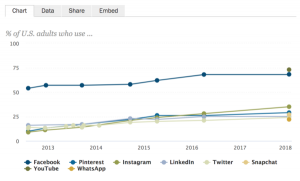Back in February 2014, I was the partial subject of John Greathouse’s article for Forbes, entitled “Go To War With Your Competitors: Fight Like the Peace Corps.” John used my experiences in the Peace Corps as a launching point to discuss how organizations like the Peace Corps and Marines—for all their differences—can attract top people by offering something other than high salaries, equity participation and performance bonuses.
Now don’t get me wrong, meaningful paychecks, stock options and corporate career advancement are important – they are evidence of our hard work and success. But for most of us, particularly in the early stages of our careers, they’re other motivations that are equally important.
And this got me thinking. How do some companies always seem to attract the best talent? What do these companies know? And what can we all learn from them? I’m talking about the intangibles that draw some of us to the Peace Corps, or to the Marines, or a startup.
The Allure of Intangibles
The intangibles that matter most are not ping pong tables, kegs in the break room, free haircuts or meals, but rather:
- More opportunities for personal growth
- Increasing responsibility for a sense of accomplishment
- Variety and flexibility in work for self-exploration
- Access to mentors who share their knowledge and experience for continuous learning
- A culture with a clearly articulated sense of purpose for motivation
To validate my sense that intangibles are important, I looked at several lists of the best places to work and the reasons employees gave their companies high marks. For example, the top five on Entrepreneur magazine’s 2014 list of best medium-sized companies are:
- Motley Fool
- SmartBear Software
- Travelzoo
- Cornerstone OnDemand
- Paycom
The top five on Glassdoor’s 2015 list of Best Places to Work are:
- Google
- Bain & Company
- Nestle Purina PetCare
- F5 Networks
- Boston Consulting Group
When we look at the employees’ comments, we quickly see a pattern: The best companies give their employees greater autonomy, more access to leadership, more opportunities to learn, a culture of values and challenging work. And one more: the chance to work with the best. In other words, attracting the best employees is a lure for others who aspire to be the best.
The Petri Dish of Opportunity
I didn’t know it at the time, but the Peace Corps was my personal Petri dish in which I was free to experiment, make mistakes and grow. Much of what I learned working with people, raising money and securing foundation funding put me on track to develop the charity database that was the basis for NOZA, my first entrepreneurial venture. Everything I learned about A/B testing and human nature and the importance of value (nothing free is worth buying) continues to guide my business decisions today.
While every business should offer the intangibles that motivate and challenge their employees, it’s especially critical for startups. First, giving employees opportunities to learn and grow makes for more fulfilled individuals and teams.
Second, small entrepreneurial companies typically are lean bootstrapping operations. Access to leadership is easier. Flexibility and variety are more natural because everyone is hands-on. And motivated, self-starters are appreciated.
Third, providing meaningful intangibles enables startups and young entrepreneurial firms to compete for the best employees, even when money is tight. At the same time, employees who may have future entrepreneurial aspirations can learn firsthand what it takes to succeed.
Of course, many mature companies also understand the attraction of the intangibles. It’s what keeps Google on top of so many lists of the best companies to work year after year. The challenge for established companies is remembering their roots and staying true to the culture that enabled them to grow and succeed in the first place.
Organizational Characteristics that Breed Intangibles
In looking at the similarities between the Peace Corps and Marines, John Greathouse identified several organizational characteristics. I think they apply equally well to companies and help us understand how we can instill motivation, innovation, opportunity and leadership in the next generation of entrepreneurs as well as attract the best employees.
- Sense of Purpose: Be clear about what you and every employee are working toward. Each individual needs to understand his or her contribution to that end. When people buy-in to the purpose, they’re motivated to reach goals.
- Mission Clarity: Having a well-articulated mission defines that sense of purpose. But clarity comes from seeing that mission carried through everything the company does. By walking the walk, you lead employees to do the same.
- Group Identity: There’s a fellowship and camaraderie that develops across the company when everyone from CEO to intern identifies as a group working toward a common goal. It becomes your culture.
- Educational Opportunity: Whether it’s the trial and error of learning how to work with farmers in Paraguay or having access to a mentor who encourages problem solving, learning is invaluable. These are life skills that build confidence and encourage employees to tackle challenges head on.
- Personal Fulfillment: Just as athletes are driven by personal bests, so too employees thrive on career milestones. Encourage them to take on increasing responsibility and provide opportunities for leadership, be it leading a project or leading a team..
- Ability to Make an Impact: Employees need to see that their work matters. Encourage them to solve problems and acknowledge the ways in which they are making a difference. Fostering a sense of personal accomplishment turns employees into self-starters.
It’s one thing to understand the important intangibles, and it’s another thing to put them into practice. Even after 10 years and 2 startups I’m still trying to figure it out! Fortunately I’ve been surrounded by many incredible team members and mentors whom all contributed to a culture where the intangibles really matter. At HG Data we haven’t perfected it yet and there’s always room for improvement, but we work hard at it and we talk about it and we iterate and it shows. And for good measure we throw rockin parties as well.
This article first appeared on the HG Data Blog.
Business & Finance Articles on Business 2 Community(111)




